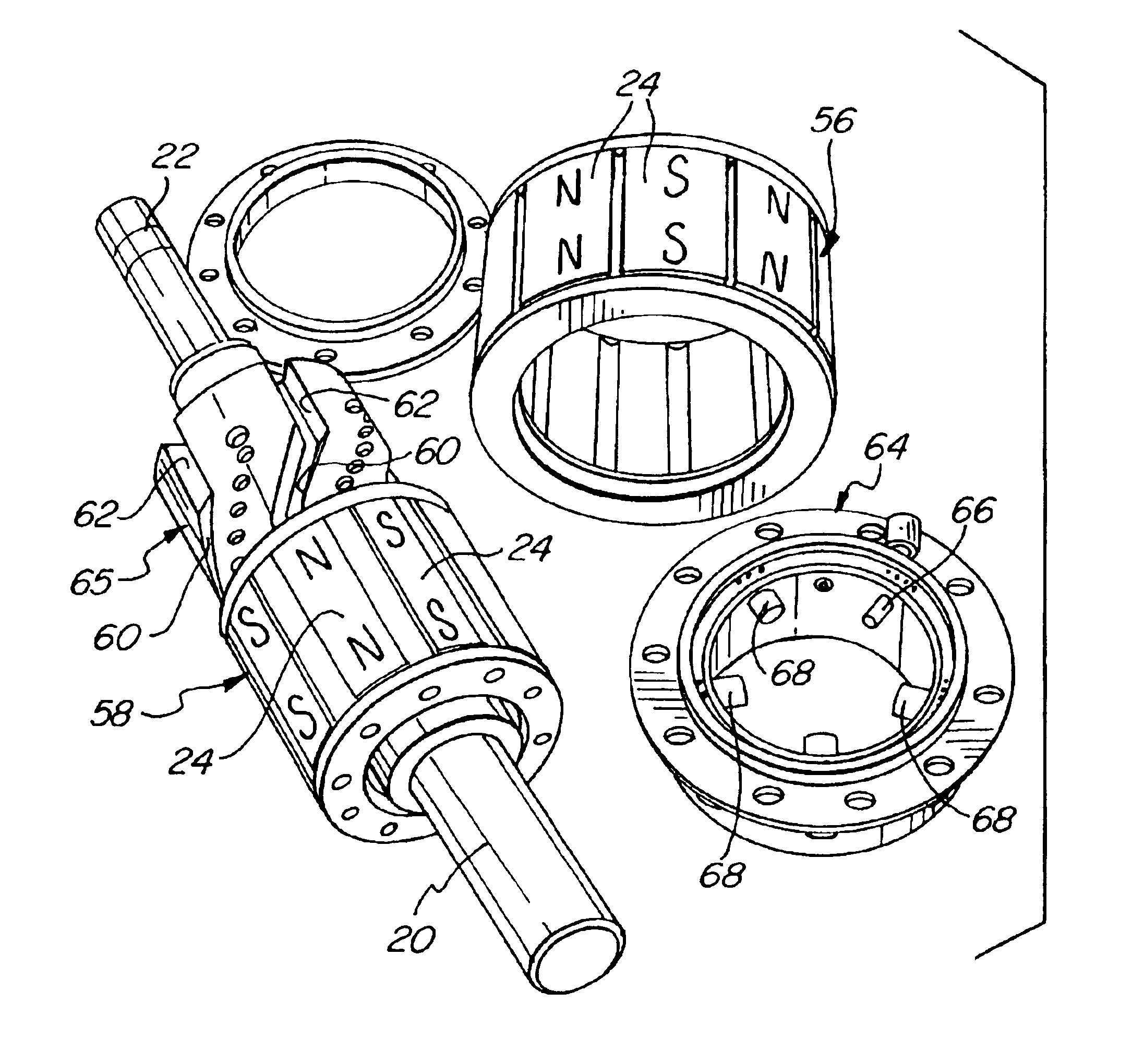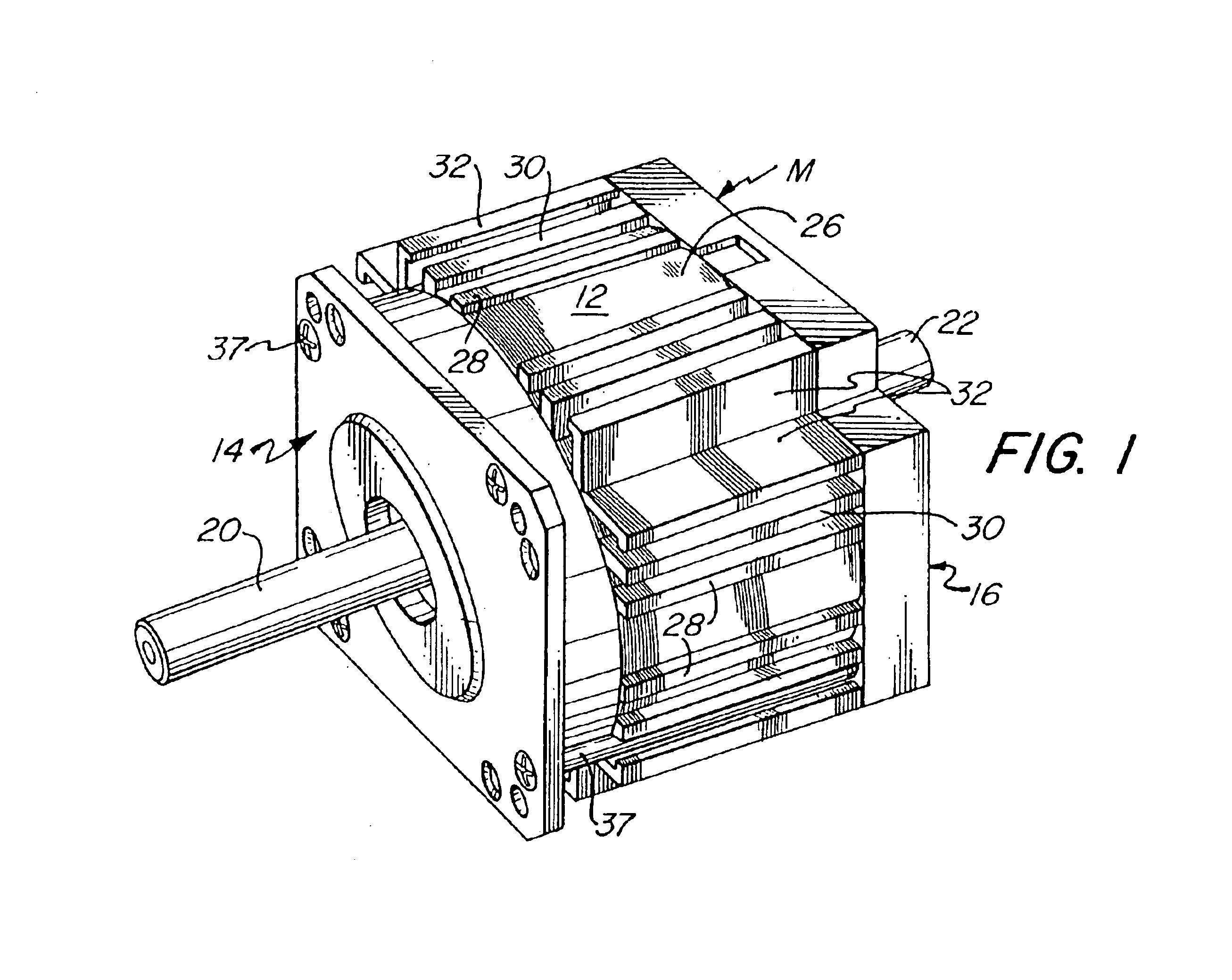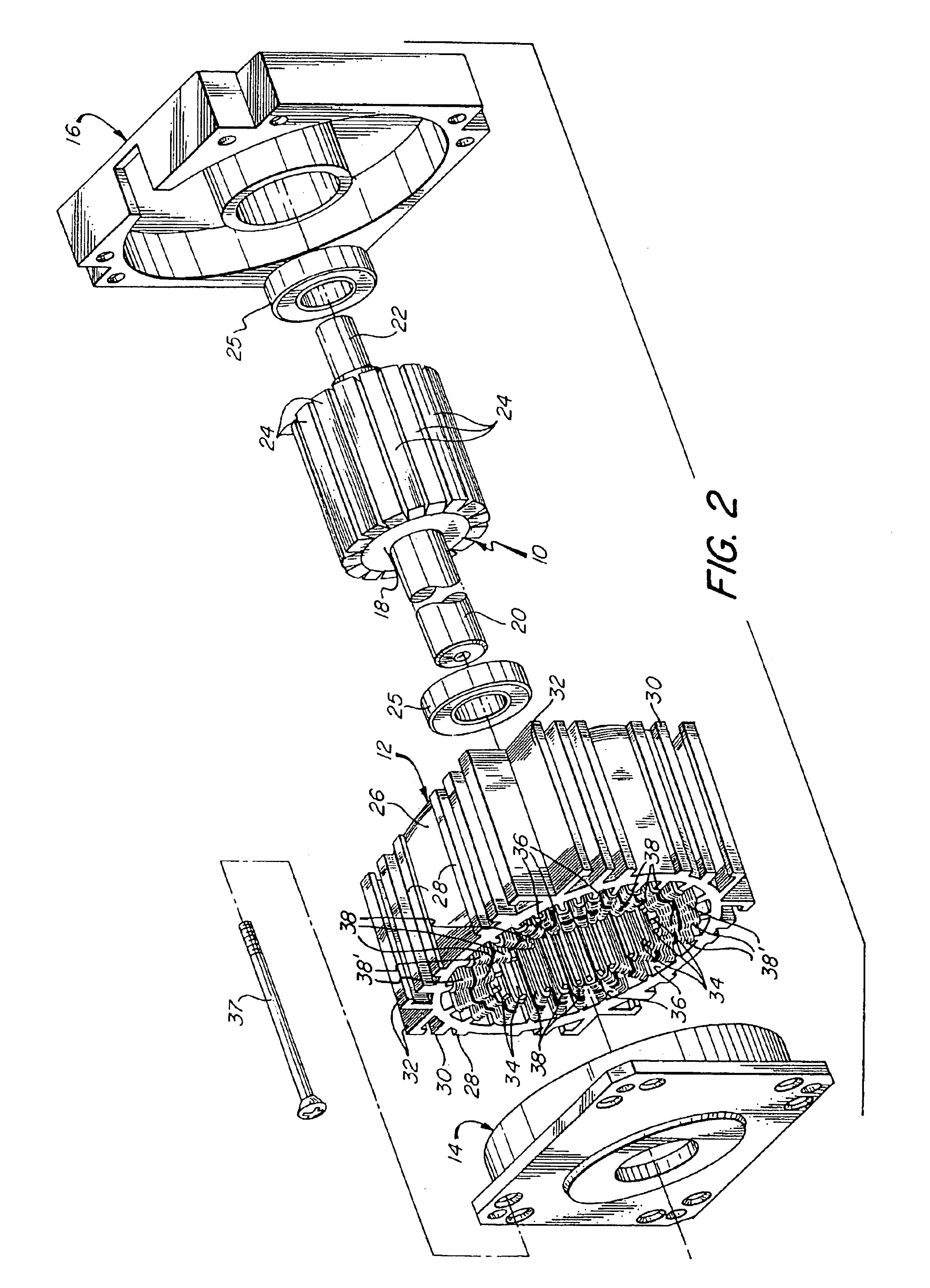It is to be appreciated that primary advantages afforded by permanent magnet motors at standstill and low speeds are generally regarded to become disadvantages at medium and high speeds.
Iron losses vary as approximately square functions of frequency and flux, and at high speeds the flux densities that are magnetically induced in the
stator (i.e., in the d-axis poles) cause iron losses to vary as a cubic function in the affected areas; thus, significantly increased amounts of power are consumed and commensurately elevated motor temperatures are generated.
Conversely, periods of high-speed operation in such applications are very brief, and the accompanying energy losses are accepted; moreover, high-
voltage supplies are of course available, as needed, on a
factory floor.
On the other hand, in mobile applications, such as for
hybrid and electric vehicles (e.g., automobiles, buses, trucks, motorcycles, scooters, mopeds and, indeed, the so-called human transporters that have recently been introduced), the motor used must be capable of operating at high speeds and for long periods of time, and low efficiency at operating speeds is not acceptable.
The difficulty of satisfying these criteria is increased by the need to use (now, and for the foreseeable future) low-
voltage batteries, which severely limit speed range capability.
As a result of such factors, induction motors and (to a lesser extent) switched reluctance motors are presently employed for vehicular applications, with the low torque that they produce during acceleration being either accepted or compensated for, typically (as to the latter) by overdriving of the motor; electrical
power consumption and motor temperatures are therefore excessive, and battery life is significantly reduced.
Proponents assert that the application of d-axis phase excitation increases high-speed performance of such motors; this could occur, however, only at the expense of significantly reduced low-speed torque capability.
Although the foregoing effect may be ameliorated by using narrower bridges, still low-speed torque values would typically be reduced to less then half of those which could be produced using standard surface magnet rotors, and the application of d-axis current would be expected to have limited range and effectiveness.
The mechanisms described above show the limitations of the d-q approach, the output range being restricted because of the loss-exchange nature of d-q control.
Thus, the primary
advantage and attractiveness of the permanent magnet motor (i.e.,
low speed torque) is significantly compromised.
It does not however alter the magnet
bias field, and iron losses remain very high in the d-axis poles, again resulting in reduced efficiency and high motor temperatures.
In addition, difficulties are associated with the switching that is involved in alternating between full and partial energization of the phase windings.
This technique reduces magnet-to-
stator engagement and, in turn, decreases
flux linkage and b-emf, ultimately leading to higher speeds; difficulties may arise however due to several factors: Not only are the radial forces acting upon the magnets a function of motion length, and hence highly nonlinear, but also, and perhaps more importantly, the magnitudes of those forces necessarily vary significantly with the speed of rotor rotation.
Such force variations would be expected to induce oscillatory motion in the magnets during operation of the motor, making it difficult, if not impossible, to map magnet actuation into a useful speed range.
Magnetic flux travels axially along the stator, but does not penetrate to a depth sufficient to enter the coils.
Measurements made using a prototype similar to the motor described in the Masuzawa et al. patent, but differing therefrom in that magnet volume and surface area were higher, produced the following results: Even at speeds as low as 2500 rpm, and flux densities common in modern conventional motors, difficulties were found to exist in the magnetic concept; i.e., as the rotor sections were angularly displaced b-emf decreased and measured iron losses increased (rather than decreasing).
At speeds higher than 2500 rpm, moreover, iron losses became so dominant that efficient motor operation was not possible, evidently due to the generation of
axial flux in the
stator poles (
axial flux polarity alternates according to
electrical frequency, and flux density is high).
In addition, due to the orientation of the planes of the stator laminations, large
eddy current losses were induced in the stator pole tips, thus severely compromising high-speed efficiency.
And finally (and although not tested), control difficulties would be anticipated in the use of such a motor; because the angularly shiftable rotor section is not constrained, interaction between the two rotor sections would be expected to transmit unanticipated and unpredictable torques to the
motor load.
 Login to View More
Login to View More  Login to View More
Login to View More 


